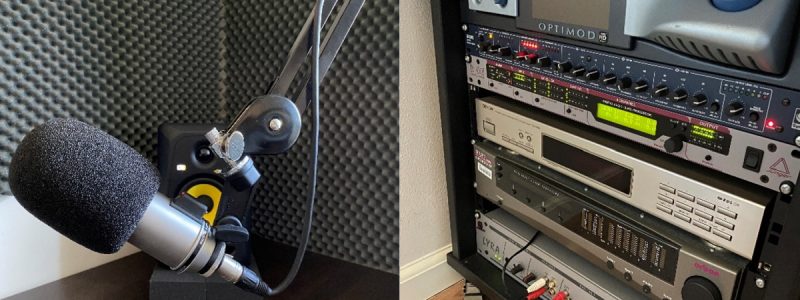This post was written by my colleague Fardau Van Neerden, and it’s a follow-up to my post suggested equipment to deliver virtual sessions.
For this post, we’ll go into improving your (home) setup for team meetings, presentations, and virtual workshop sessions. And I’ll take my home setup as an example and walk you through some of the things I have to improve voice quality.
Video and Audio
Now let me be honest and provide my personal opinion: I think a good voice is more important than having a high-quality picture. Of course, having a decent webcam will improve quality, but any recent modern webcam with good lenses will do the job. The picture quality will most likely be reduced and encoded into a lower bitrate, so it is digestible for the platform and other participants’ connectivity. And when delivering a presentation or workshop, most of the time, you’ll likely be showing a slide deck, remote desktop, or other content rather than your face. At the same time, you’re likely to be talking most of the time. Personally, I think it helps to attract and keep the listener engaged if the voice quality is of superior quality. Same as with video, the audio track will be encoded, and there can be codec artifacts, but this will be significantly limited.
Home Studio
Now I’m lucky enough to have a home studio with a professional setup. This enables me to address a couple of things that affect the quality of any voice call.
- Sound proofing (generic foam wedges)
- High-Quality mic (Rode Broadcaster)
- Voiceprocessor (Symetrix 528e)
- High-quality mixer/audio interface (MARIAN)
Lets briefly go over each aspect and what they do.
Sound proofing: My studio would sound like a hall with an echo if I would not have applied sound proofing. Sound proofing comes in many pricing ranges, but in general, you apply them to your walls/corners and ceilings. TIP: It is best to reduce the reflection of soundwaves as soon as possible. So when you talk toward your pc/laptop, it is best to have sound proofing directly behind those. This will absorb your voice and avoid that it will be reflected back and bounce through the room.
Microphone: A good microphone is maybe the most important thing I would not spare any costs. I’ve heard cheap microphones that are really terrible. Even with proper voice-processing following the mic, things only get worse. So having a high-quality microphone is paramount. What are things to look for? Well, for this setup, you’ll be most like be speaking directly into the microphone. So try to find a microphone that has a narrow sensitivity field. Also, since you may not have a voice processor, try to use a microphone with an adjustable highpass filter. This allows you to filter out any rumble from your surroundings or your voice.
Voiceprocessor: My microphone goes into a voice processor. This voice processor does a couple of things. First, it de-ess the voice. This will filter out any high hiss sounds when speaking, which can get enhanced by the encoding codec causing really nasty sounds. The next step is quite important in home/office environments with background noise, and that is the downward expander. Some other voice processors use a (noise) gate to do the same. A downward expander is less audible and yields a better result in my personal taste. But the end goal is to shut off the audio when the input falls below a certain threshold. This is important to reduce background noise when you’re not talking. In my setup, there are a couple more enhancements like a compressor to compress your voice to a denser average level. This is great for the listener, so they won’t have to adjust their volume all the time. Finally, I have the possibility to re-equalize the voice, which I use with caution. But as said, the audio will be encoded, and there will be a codec used, which might have difficulty encoding a full range of hertz. Also, the lister is unlikely to have high-end headphones or speakers with limited frequency response, so emphasize the mid-range and stay away from enhancing the low and high end like you might know and like from the big and chesty radio sound.
Finally, it is time to feed it into the computer. Honestly, the majority of onboard audio interfaces are pretty good, but if you can spare to shell out for a higher quality interface, please do. It will also improve playback if you use your PC/laptop for listening/streaming. I have a PCIe, but there are plenty of USB based external audio interfaces that yield really high quality.
Headset?
I personally do not use a headset when at home. There are a couple of reasons for that.
- Quality is lower than my studio setup
- It gets uncomfortable over time (longer calls)
But when I do use a headset, I stay away from wireless Bluetooth headsets. Too often, there are small glitches that degrade quality. Also, Bluetooth will already reduce the quality before it even reaches your pc. And the batteries always cut out at the worst moment 😊.


[…] audio quality is more important than video quality (as also said here). If you need to decide what to invest in, I’d instead go with a pretty good microphone and a […]